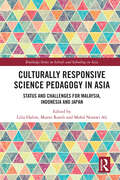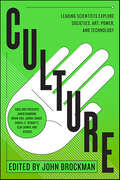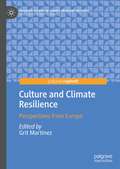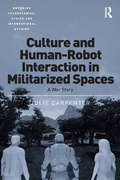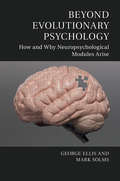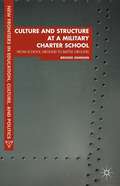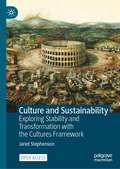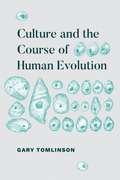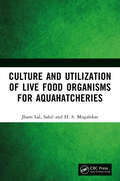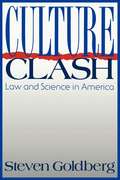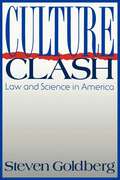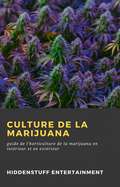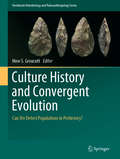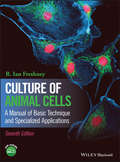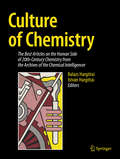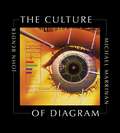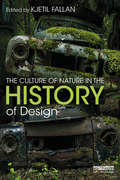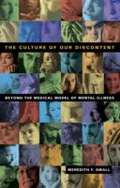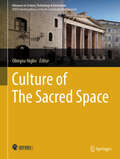- Table View
- List View
Culturally Responsive Science Pedagogy in Asia: Status and Challenges for Malaysia, Indonesia and Japan (Routledge Series on Schools and Schooling in Asia)
by Lilia Halim Murni Ramli Mohd Norawi AliScience learning, for many, is often seen as learning a culture of science knowledge and practices - that is incongruent from one’s everyday experiences and cultural background of learners. This edited volume presents a systemic view of the current initiatives and challenges for the inclusion of Culturally Responsive Science Pedagogy (CRSP) in non-western and multicultural contexts in three Asian countries – Malaysia, Indonesia and Japan. Split into three parts, the book examines the history and current educational systems, curriculums, and socio-cultural diversities in each country, offering an updated review of equity in education. It reflects and expands on the role of CSRP in diverse societies, before going into case studies that feature the experiences of teachers in implementing CRSP in Malaysia, Indonesia and Japan. These snapshots reflect the multiple ways equity is addressed in the teaching and learning of science in Asian countries, allowing readers to extrapolate the possible challenges and best practices for designing and implementing CRSP in practice. The final section examines how these findings provide a sustainable platform for building capacity in understanding of the cultural complexities and realities of recruiting and retaining diverse students into science. One of few books to investigate the role of CRSP in diverse societies in Malaysia, Indonesia and Japan, this book makes a unique contribution to the field of science education with reference to culturally responsive pedagogy. Its strategies and solutions serve as an important comprehensive reference for researchers and science teacher educators.
Culture: Leading Scientists Explore Civilizations, Art, Networks, Reputation, and the Online Revolution (Best of Edge Series)
by John Brockman"Theway Brockman interlaces essays about research on the frontiers of science withones on artistic vision, education, psychology and economics is sure to buzzany brain." —Chicago Sun-Times, on This Will Change EverythingLaunchinga hard-hitting new series from Edge.org and Harper Perennial, editor JohnBrockman delivers this cutting-edge master class covering everything you needto know about Culture. With original contributions by the world’sleading thinkers and scientists, including Jared Diamond, Daniel C. Dennett,Brian Eno, Jaron Lanier,Nicholas Christakis, and others, Culture offers a mind-expanding primeron a fundamental topic. Unparalleled in scope, depth, insight and quality, Edge.org’s Culture is not to be missed.
Culture and Climate Resilience: Perspectives from Europe (Palgrave Studies in Climate Resilient Societies)
by Grit MartinezThis book addresses the importance of cultural values, local knowledge and identity in building community resilience in place based contexts. There is a growing impetus among policy makers and practitioners to support and empower capacities of communities under changing climatic conditions. Despite this there is little systematic understanding of why approaches work at local levels or not and what makes some communities resilient and others less so. Europe is typically thought to be well equipped for coping with the effects of a changing climate - because of its moderate climate, its manifold urban-industrialized regions, it’s typically highly skilled population, its successes in science and technology and its advanced climate change policies. However, there is a growing need to understand the effects culture has on communal resiliency and for decision makers and planners to pay attention to historical and cultural characteristics and the complexity of contextualized local conditions to enable successful and durable implementation of climate change policies, programs and measures. This book will be a valuable resource for researchers, students, practitioners and policy makers interested in facilitating sustainable, resilient communities.
Culture and Cognition: The Boundaries of Literary and Scientific Inquiry
by Ronald Schleifer Robert Con Davis Nancy MerglerThis groundbreaking book challenges the disciplinary boundaries that have traditionally separated scientific inquiry from literary inquiry. It explores scientific knowledge in three subject areas—the natural history of aging, literary narrative, and psychoanalysis. In the authors' view, the different perspectives on cognition afforded by Anglo-American cognitive science, Greimassian semiotics, and Lacanian psychoanalysis help us to redefine our very notion of culture.Part I historically situates the concepts of meaning and truth in twentieth-century semiotic theory and cognitive science. Part II contrasts the modes of Freudian case history to the general instance of Einstein's relativity theory and then sets forth a rhetoric of narrative based on the discourse of the aged. Part III examines in the context of literary studies an interdisciplinary concept of cultural cognition.Culture and Cognition will be essential reading for literary theorists, historians and philosophers of science; semioticians; and scholars and students of cultural studies, the sociology of literature, and science and literature.
Culture and Human-Robot Interaction in Militarized Spaces: A War Story (Emerging Technologies, Ethics and International Affairs)
by Julie CarpenterExplosive Ordnance Disposal (EOD) personnel are some of the most highly trained people in the military, with a job description that spans defusing unexploded ordnance to protecting VIP’s and state dignitaries. EOD are also one of the first military groups to work with robots every day. These robots have become an increasingly important tool in EOD work, enabling people to work at safer distances in many dangerous situations. Based on exploratory research investigating interactions between EOD personnel and the robots they use, this study richly describes the nuances of these reciprocal influences, especially those related to operator emotion associated with the robots. In particular, this book examines the activities, processes and contexts that influence or constrain everyday EOD human-robot interactions, what human factors are shaping the (robotic) technology and how people and culture are being changed by using it. The findings from this research have implications for future personnel training, and the refinement of robot design considerations for many fields that rely on critical small group communication and decision-making skills.
Culture and Morality: The Relativity of Values in Anthropology
by Elvin HatchContents<P><P> 1. The Facets of Relativism <P> 2. The Historical Context <P> 3. The New Self-Identity <P> 4. The Call for Tolerance <P> 5. The Limits of Tolerance <P> 6. A Growing Disaffection <P> 7. A Working Alternative
Culture and Neural Frames of Cognition and Communication (On Thinking #3)
by Ernst Pöppel Shihui HanCultural neuroscience combines brain imaging techniques such as functional magnetic resonance imaging and event-related brain potentials with methods of social and cultural psychology to investigate whether and how cultures influence the neural mechanisms of perception, attention, emotion, social cognition, and other human cognitive processes. The findings of cultural neuroscience studies improve our understanding of the relation between human brain function and sociocultural contexts and help to reframe the "big question" of nature versus nurture. This book is organized so that two chapters provide general views of the relation between biological evolution, cultural evolution and recent cultural neuroscience studies, while other chapters focus on several aspects of human cognition that have been shown to be strongly influenced by sociocultural factors such as self-concept representation, language processes, emotion, time perception, and decision-making. The main goal of this work is to address how thinking actually takes place and how the underlying neural mechanisms are affected by culture and identity.
Culture and Psychology: How and Why Neuropsychological Modules Arise (Culture and Psychology)
by Ellis Mark Solms George F. R.The nature/nurture question is an age-old problem. Beyond Evolutionary Psychology deals with the relation between culture, evolution, psychology and emotion, based both in the underlying biology, determined by our evolutionary heritage, and in the interaction of our brain with the physical, ecological and social environment, based in the key property of brain plasticity. Ellis and Solms show how the brain structures that underlie cognition and behaviour relate to each other through developmental processes guided by primary emotional systems. This makes very clear which brain modules are innate or 'hard-wired', and which are 'soft-wired' or determined through environmental interactions. The key finding is that there can be no innate cognitive modules in the neocortex, as this is not possible on both developmental and genetic grounds; in particular there can be no innate language acquisition device. This is essential reading for students and scholars of evolutionary psychology and evolutionary biology.
Culture and Structure at a Military Charter School
by Brooke JohnsonTaking military charter schools as her subject, and drawing on years of research at one school in particular, Brooke Johnson explores the underpinings of a culture based on militarization and neoliberal educational reforms and probes its effects on individual identity and social interactions at the school.
Culture and Sustainability: Exploring Stability and Transformation with the Cultures Framework
by Janet StephensonThis Open access book brings a cultural lens, and a distinctive analytical framework, to the problem of transitioning to a sustainable, low-carbon future. The world faces a seemingly impossible hurdle – to radically alter long-established social, economic and technological systems in order to live within the biophysical limits of the globe, while ensuring a just and enduring transition. The overarching premise of this book is that this cannot be achieved without widespread cultural change. ‘We need a change in culture’ is often used rhetorically, but what does this really mean?Stephenson starts by exploring culture’s elusiveness, describing its divergent interpretations before identifying core features of culture that are common across most definitions. These characteristics form the core of the cultures framework, an extensively tested approach to studying the links between culture and sustainability outcomes. The framework makes culture an accessible concept which can be analytically applied to almost any sustainability problem. Using many examples from around the world, Stephenson illustrates how cultural stability, cultural flexibility and cultural transformation all have a part to play in the sustainability transition. She guides the reader in the use of the cultures framework for policy development and to underpin research undertaken by individuals or by multi-disciplinary teams.Clearly and engagingly written, Culture and Sustainability is essential reading for academics, students, policy makers and indeed anyone interested in a sustainable future.
Culture and the Course of Human Evolution
by Gary TomlinsonThe rapid evolutionary development of modern Homo sapiens over the past 200,000 years is a topic of fevered interest in numerous disciplines. How did humans, while undergoing few physical changes from their first arrival, so quickly develop the capacities to transform their world? Gary Tomlinson’s Culture and the Course of Human Evolution is aimed at both scientists and humanists, and it makes the case that neither side alone can answer the most important questions about our origins. Tomlinson offers a new model for understanding this period in our emergence, one based on analysis of advancing human cultures in an evolution that was simultaneously cultural and biological—a biocultural evolution. He places front and center the emergence of culture and the human capacities to create it, in a fashion that expands the conceptual framework of recent evolutionary theory. His wide-ranging vision encompasses arguments on the development of music, modern technology, and metaphysics. At the heart of these developments, he shows, are transformations in our species’ particular knack for signmaking. With its innovative synthesis of humanistic and scientific ideas, this book will be an essential text.
Culture and Utilization of Live Food Organisms for Aquahatcheries
by Jham Lal Sahil H. S. MogalekarIn today's world, food scarcity and food security are significant global concerns, with 811 million people suffering from hunger and 3 billion individuals unable to afford healthy diets. This book discusses fisheries and aquaculture as crucial contributors to nutritional security and the need for sustainable practices to meet the growing demand. The subject matter of this book covers: Recycling of Waste Through Tubifex Culture and Used as Live Food in Aquahatcheries Culture Techniques of Daphnia Mosquito Larval Control Through the Larvivorous Fish Chlorella Live Food: Cultivation and Applications Print edition not for sale in South Asia (India, Sri Lanka, Nepal, Bangladesh, Pakistan and Bhutan)
Culture Clash: Law and Science in America (Open Access Lib And Hc Ser.)
by Steven GoldbergIt is an article of faith in America that scientific advances will lead to wondrous progress in our daily lives. Americans proudly support scientific research that yields stunning breakthroughs and Nobel prizes. We relish the ensuing debate about the implications—moral, ethical, practical—of these advances. Will genetic engineering change our basic nature? Will artificial intelligence challenge our sense of human uniqueness? And yet the actual implementation of these technologies is often sluggish and much-delayed. From Star Trek to Jurassic Park, the American imagination has always been fascinated by the power of scientific technology. But what does the reality of scientific progress mean for our society? In this controversial book, Steven Goldberg provides a compelling look at the intersection of two of America's most powerful communities—law and science—to explain this apparent contradiction. Rarely considered in tandem, law and science highlight a fundamental paradox in the American character, the struggle between progress and process. Science, with its ethic of endless progress, has long fit beautifully with America's self image. Law, in accordance with the American ideal of giving everyone a fair say, stresses process above all else, seeking an acceptable, rather than a scientifically correct, result. This characteristic has been especially influential in light of the explosive growth of the legal community in recent years. Exposing how the legal system both supports and restricts American science and technology, Goldberg considers the role and future of three projects—artificial intelligence, nuclear fusion, and the human genome initiative—to argue for a scientific vision that infuses research with social goals beyond the pure search for truth. Certain to provoke debate within a wide range of academic and professional communities, Culture Clash reveals one of the most important and defining conflicts in contemporary American life.
Culture Clash: Law and Science in America
by Steven GoldbergIt is an article of faith in America that scientific advances will lead to wondrous progress in our daily lives. Americans proudly support scientific research that yields stunning breakthroughs and Nobel prizes. We relish the ensuing debate about the implications—moral, ethical, practical—of these advances. Will genetic engineering change our basic nature? Will artificial intelligence challenge our sense of human uniqueness? And yet the actual implementation of these technologies is often sluggish and much-delayed. From Star Trek to Jurassic Park, the American imagination has always been fascinated by the power of scientific technology. But what does the reality of scientific progress mean for our society? In this controversial book, Steven Goldberg provides a compelling look at the intersection of two of America's most powerful communities—law and science—to explain this apparent contradiction. Rarely considered in tandem, law and science highlight a fundamental paradox in the American character, the struggle between progress and process. Science, with its ethic of endless progress, has long fit beautifully with America's self image. Law, in accordance with the American ideal of giving everyone a fair say, stresses process above all else, seeking an acceptable, rather than a scientifically correct, result. This characteristic has been especially influential in light of the explosive growth of the legal community in recent years. Exposing how the legal system both supports and restricts American science and technology, Goldberg considers the role and future of three projects—artificial intelligence, nuclear fusion, and the human genome initiative—to argue for a scientific vision that infuses research with social goals beyond the pure search for truth. Certain to provoke debate within a wide range of academic and professional communities, Culture Clash reveals one of the most important and defining conflicts in contemporary American life.
Culture de la Marijuana: guide de l'horticulture de la marijuana en intérieur et en extérieur
by Hiddenstuff EntertainmentLa référence ultime et le guide étape par étape de la culture et de la culture de la marijuana. Apprenez et cultivez du cannabis avec des étapes faciles à suivre du début à la fin. Comprenez et commencez à grandir en quelques heures. Instructions étape par étape simples et faciles à suivre. En utilisant les stratégies de croissance les plus efficaces, vous pouvez vous développer comme le font les pros. Voici ce qui est inclus -Conception de votre espace de culture -Éclairage -Aération -Comment suivre la croissance des plantes -Types d'environnement en croissance -Conteneurs -Nutriments -Arroser vos plantes Économisez du temps et de l'argent en utilisant ce guide ultime. - Faites défiler vers le haut de la page et cliquez sur Ajouter au panier pour acheter instantanément - Avertissement Cet auteur et / ou propriétaire (s) des droits ne fait aucune réclamation, promesse ou garantie quant à l'exactitude, l'exhaustivité ou l'adéquation du contenu de ce livre, et décline expressément toute responsabilité pour les erreurs et omissions dans le contenu qu'il contient. Ce produit est pour une utilisation de référence seulement.
Culture History and Convergent Evolution: Can We Detect Populations in Prehistory? (Vertebrate Paleobiology and Paleoanthropology)
by Huw S. GroucuttThis volume brings together diverse contributions from leading archaeologists and paleoanthropologists, covering various spatial and temporal periods to distinguish convergent evolution from cultural transmission in order to see if we can discover ancient human populations. With a focus on lithic technology, the book analyzes ancient materials and cultures to systematically explore the theoretical and physical aspects of culture, convergence, and populations in human evolution and prehistory. The book will be of interest to academics, students and researchers in archaeology, paleoanthropology, genetics, and paleontology. The book begins by addressing early prehistory, discussing the convergent evolution of behaviors and the diverse ecological conditions driving the success of different evolutionary paths. Chapters discuss these topics and technology in the context of the Lower Paleolithic/Earlier Stone age and Middle Paleolithic/Middle Stone Age. The book then moves towards a focus on the prehistory of our species over the last 40,000 years. Topics covered include the human evolutionary and dispersal consequences of the Middle-Upper Paleolithic Transition in Western Eurasia. Readers will also learn about the cultural convergences, and divergences, that occurred during the Terminal Pleistocene and Holocene, such as the budding of human societies in the Americas. The book concludes by integrating these various perspectives and theories, and explores different methods of analysis to link technological developments and cultural convergence.
Culture Media, Solutions, and Systems in Human ART
by Patrick QuinnThis volume describes culture media and solutions used in human ART; how they have been developed for in vitro human pre-implantation embryo development, the function and importance of the various components in media and solutions and how they interact, and how the systems in which these are used can influence outcomes. Chapters discuss inorganic solutes, energy substrates, amino acids, macromolecules, cytokines, growth factors, buffers, pH, osmolality, and the interaction of these parameters. The role of incubators and other physical factors are reviewed, along with the relevance and prospects of emerging technologies: morphokinetic analysis using time-lapse imaging and dynamic fluid incubation systems. Results of prospective randomized trials are emphasized to ascertain the added value of these techniques for selecting viable embryos. This comprehensive guide will be invaluable for embryologists, physicians and all personnel involved in the fluid products used in human ART seeking to optimize their successful use of these components.
Culture Negative Orthopedic Biofilm Infections (Springer Series on Biofilms #7)
by Garth D. Ehrlich Patrick J. Demeo Heinz Winkler J. William CostertonDuring the recent transition between acute diseases caused by swarms of single planktonic bacteria, and chronic infections caused by bacteria growing in slime-enclosed biofilms, a general clinical consensus has emerged that pathologies with bacterial etiologies are frequently culture negative. Because biofilm infections now affect 17 million Americans per year (killing approximately 450,000), the suggestion that these common and lethal infections regularly go unnoticed by the only FDA-approved method for their detection and characterization is a matter of urgent concern. Biologically, we would expect that planktonic bacterial cells would colonize any new surface, including the surface of an agar plate, while the specialized sessile cells of a biofilm community would have no such proclivity. In the study of biofilm diseases ranging from otitis media to prostatitis, it was found that direct microscopy and DNA- and RNA-based molecular methods regularly document the presence of living bacteria in tissues and samples that are culture negative. The editors selected orthopedic biofilm infections as the subject of this book because these infections occur against a background of microbiological sterility in which modern molecular methods would be expected to find bacterial DNA, RNA-based microscopic methods would be expected to locate bacterial cells, and cultures would be negative. Moreover, in Orthopedics we find an already biofilm-adapted surgical group in which current strategies are based on the meticulous removal of compromised tissues, antibiotic options as based on high biofilm-killing local doses, and there are practical bedside strategies for dealing with biofilm infections. So here is where the new paradigm of biofilm infection meets the equally new paradigm of the culture negativity of biofilms, and this volume presents a conceptual synthesis that may soon combine the most effective molecular methods for the detection and identification of bacteria with a surgical discipline that is ready to help patients.
Culture of Animal Cells
by R. Ian FreshneySince the publication of the sixth edition of this benchmark text, numerous advances in the field have been made - particularly in stem cells, 3D culture, scale-up, STR profiling, and culture of specialized cells. Culture of Animal Cells: A Manual of Basic Technique and Specialized Applications, Seventh Edition is the updated version of this benchmark text, addressing these recent developments in the field as well as the basic skills and protocols. This eagerly awaited edition reviews the increasing diversity of the applications of cell culture and the proliferation of specialized techniques, and provides an introduction to new subtopics in mini-reviews. New features also include a new chapter on cell line authentication with a review of the major issues and appropriate protocols including DNA profiling and barcoding, as well as some new specialized protocols. Because of the continuing expansion of cell culture, and to keep the bulk of the book to a reasonable size, some specialized protocols are presented as supplementary material online. Culture of Animal Cells: A Manual of Basic Technique and Specialized Applications, Seventh Edition provides the most accessible and comprehensive introduction available to the culture and experimental manipulation of animal cells. This text is an indispensable resource for those in or entering the field, including academic research scientists, clinical and biopharmaceutical researchers, undergraduate and graduate students, cell and molecular biology and genetics lab managers, trainees and technicians.
Culture of Chemistry: The Best Articles on the Human Side of 20th-Century Chemistry from the Archives of the Chemical Intelligencer
by Balazs Hargittai István HargittaiIncludes specially selected articles that previously appeared in The Chemical Intelligencer magazine published (1995-2000). Excerpts of these Editor's choice chapters chronicle the culture and history of chemistry, featuring great chemists and discoverers. Contributors from among the best-known authors of the chemistry community, including numerous Nobel laureates. Features behind the scenes stories about pivotal discoveries, intricacies of laboratory life and interactions among scientists, favorite recipes of renowned researchers, life histories and anecdotes. Chapters detail the human side of science but also present scientific information communicated in an easy-to-perceive and entertaining way. This unique book is not only aimed at chemists but individuals who are interested in the cultural aspects of our science.
The Culture of Diagram
by John Bender Michael MarrinanThe diagram, write Bender (interdisciplinary studies, Stanford U.) and Marrinan (art history, Stanford U.), "is a proliferation of manifestly selective packets of dissimilar data correlated in an explicitly process-oriented array that has some of the attributes of a representation but is situated in the world like an object." They present here an "archaeology of the diagram" that centers on this understanding of diagram as process. Their discussion ranges across 250 years, from the diagrams of Diderot's Encylopédie to diagrammatic forms of representation in quantum mechanics, and across multiple fields of human endeavor, including mathematics, art, and medicine. Annotation ©2010 Book News, Inc., Portland, OR (booknews.com)
The Culture of Feedback: Ecological Thinking in Seventies America
by Daniel BelgradWhen we want advice from others, we often casually speak of “getting some feedback.” But how many of us give a thought to what this phrase means? The idea of feedback actually dates to World War II, when the term was developed to describe the dynamics of self-regulating systems, which correct their actions by feeding their effects back into themselves. By the early 1970s, feedback had become the governing trope for a counterculture that was reoriented and reinvigorated by ecological thinking. The Culture of Feedback digs deep into a dazzling variety of left-of-center experiences and attitudes from this misunderstood period, bringing us a new look at the wild side of the 1970s. Belgrad shows us how ideas from systems theory were taken up by the counterculture and the environmental movement, eventually influencing a wide range of beliefs and behaviors, particularly related to the question of what is and is not intelligence. He tells the story of a generation of Americans who were struck by a newfound interest in—and respect for—plants, animals, indigenous populations, and the very sounds around them, threading his tapestry with cogent insights on environmentalism, feminism, systems theory, and psychedelics. The Culture of Feedback repaints the familiar image of the ’70s as a time of Me Generation malaise to reveal an era of revolutionary and hopeful social currents, driven by desires to radically improve—and feed back into—the systems that had come before.
The Culture of Nature in the History of Design
by Kjetil FallanThe Culture of Nature in the History of Design confronts the dilemma caused by design’s pertinent yet precarious position in environmental discourse through interdisciplinary conversations about the design of nature and the nature of design. Demonstrating that the deep entanglements of design and nature have a deeper and broader history than contemporary discourse on sustainable design and ecological design might imply, this book presents case studies ranging from the eighteenth to the twenty-first century and from Singapore to Mexico. It gathers scholarship on a broad range of fields/practices, from urban planning, landscape architecture, and architecture, to engineering design, industrial design, furniture design and graphic design. From adobe architecture to the atomic bomb, from the bonsai tree to Biosphere 2, from pesticides to photovoltaics, from rust to recycling – the culture of nature permeates the history of design. As an activity and a profession always operating in the borderlands between human and non-human environments, design has always been part of the environmental problem, whilst also being an indispensable part of the solution. The book ventures into domains as diverse as design theory, research, pedagogy, politics, activism, organizations, exhibitions, and fiction and trade literature to explore how design is constantly making and unmaking the environment and, conversely, how the environment is both making and unmaking design. This book will be of great interest to a range of scholarly fields, from design education and design history to environmental policy and environmental history.
The Culture of Our Discontent
by Meredith F. SmallBy many estimations, the Western medical model of mental health is dangerously incomplete. If we step outside of the traditional disease model there are many new and different ways to understand, treat, and even accept mental illness. Culture--how we collectively live, interact, and view the world--frames our mental outlook. Arguably, culture even creates it. Western culture, for example, has completely embraced the medical model of mental illness. We quickly turn to physicians if we are unhappy or otherwise mentally discomfited, seeking solutions on a prescription pad. We expect brain chemistry to be at the root of any mental malady, forgetting the deeply entwined relationship between the biology of the brain and the environment in which we think, feel, and react. But every culture has a different view of the world, a lens through which normal or insane are viewed and defined. Anthropologist Meredith Small contends there is much to be learned from stepping away from the traditional Western medical model to explore and embrace alternative perspectives. By examining culture itself, rather than focusing on biology and medicine, we can fully understand the nature of our discontent. Looking at social, evolutionary, cross-cultural, and nutritional influences, Small deconstructs mental illnesses like depression and anxiety conditions that appear in different forms and for different reasons within the culture that defines them. By rethinking assumptions and questioning standard treatment programs, she helps us gradually relax our grip on the medical model to discover a new perspective on mental illness.
Culture of The Sacred Space (Advances in Science, Technology & Innovation)
by Olimpia NiglioThis book highlights the relationship between sacred architecture and tourism, specifically focusing on the role of interior design strategies. It explores how the interior design of sacred spaces can influence the tourist experience and shape their perception of these places. The book touches upon elements such as spatial organization, symbolism, material selection, lighting, and acoustics, all of which contribute to creating a meaningful and immersive environment for visitors. It explores the architectural design, ideological motivations, and the historical context surrounding the palace's construction. The book also addresses the eventual abandonment of the project and its transformation of their uses, reflecting on the complexities of realizing utopian visions in architecture. It examines how the sanctuary's architectural design and spatial arrangement interact with the surrounding landscape, including elements such as topography, vegetation, and water features. Moreover, it focuses on the interior design and explores the symbolism, spatial organization, artistic elements, and spiritual experiences associated with the dome interiors of these structures. The book showcases the historical context, cultural influences, and the evolution of design principles that shaped these remarkable spaces. Also, this book investigates the transition of visionary architectural drawings from the realm of professional architects. Furthermore, it explores how architectural drawings serve as a medium for expressing imaginative and utopian ideas, and how this transition occurs in the context of architectural education.
